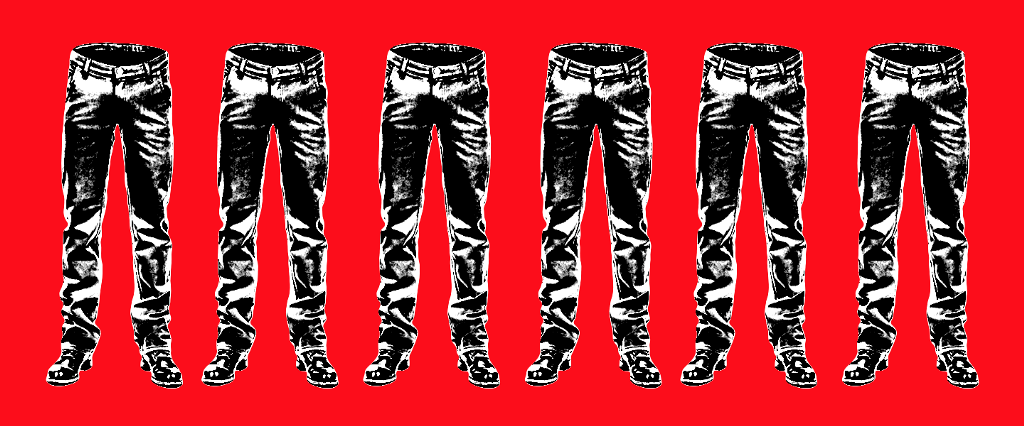Last Sunday morning, the U.K.’s paper of record, the Sunday Times, ran a profile of Generation Identity, the latest incarnation of a far-right street group whose stated aim is to reclaim the “cultural and ethnic heritage (read: white) of Europe.” The piece went viral. But not because of any earth-shattering or terrifying revelations. No, the outcry, like the piece itself, was familiar. So familiar, in fact, that it was as if it was 2016 all over again.
It started with the original headline, which read, “Middle Class and Well Spoken, Dressed in Skinny Jeans and New Balance — Meet the Hipster Fascists Breathing New Life into the British Far Right.” Almost immediately, people accused the paper of “normalizing fascism,” while minimizing the dangers fascists pose to the U.K.’s ethnic minorities at a time when, according to official police figures, the number of reported hate crimes has doubled since 2015.
It also wasn’t really factually accurate. That is, in the picture accompanying the headline, none of the men are wearing skinny jeans. Rather, they’re wearing unremarkable slim-fit cuts — pants that more or less every heterosexual male wears, and to most normal people, don’t scream “passion for fashion.” Second, New Balance is the official shoe of middle-aged fathers who believe music died after The Verve. (A “hipster” shoe probably would’ve been Adidas Ultra Boosts.)
But back to the article itself. Like I said, it felt very 2016, bringing back memories of the countless fawning profiles of the leaders of the American alt right, most notably Richard Spencer, who before being known for getting punched in the face, had been introduced to the world as a suit-clad, fade-cut-wearing intellectual, attempting to be an innocent philosopher king and champion of free speech. As The Cut wrote during Spencer’s prime:
“As the alt-right works to legitimize itself — to expand the range of acceptable political discourse and integrate fascist ideas into mainstream thinking — it’s important for us to understand how extremists can use style as a tool to disarm opponents. It’s no accident that Spencer and his ilk look like lunching lobbyists as they spout ideas about ‘peaceful ethnic cleansing’ and ‘the deconstruction of Occidental civilization.’ Putting on a suit is a strategic act of image maintenance, as are all the ways Spencer presents himself: mild-mannered, genteel, with an innocuous-sounding think tank, cloaking his racist views in obtuse, faux-intellectual language.”
Not surprisingly then, Spencer made a big deal of his fashion choices. He told interviewers about his fitness regime and the importance of his aesthetic as part of delivering his message. What’s more concerning, however, is that nearly two years since those profiles of Spencer first hit the mainstream, the media hasn’t changed how they cover him and his brethren — their style semi-competently likened to a maturity that only serves to legitimize their positions. Consider, for instance, how the Sunday Times article describes Generation Identity’s leader as a well-to-do kid working a respectable finance job: “Tom Dupré, is the son of an insurance broker from Sevenoaks, Kent. Educated at the Judd School and Bristol University, where he studied psychology, he works in the City for Standard Chartered.”
Of course, all of this goes back long before 2016. “Fascism has always been about dress and appearance,” says Stephanie Boland, a U.K.-based writer for Prospect magazine. The most common example is Hugo Boss, who were the tailors behind the Nazi Wehrmacht uniforms. Hugo Boss might have subsequently apologized and distanced itself from its association with Hitler, but its signature narrow-fit cuts that defined the aesthetic of the Third Reich remain a cornerstone of the classic Hugo Boss suit. Other examples of fashion’s open flirtations with the far right include Cristóbal Balenciaga’s associations with the Franco regime in Spain as the personal tailor to Franco’s wife. Meanwhile, Benito Mussolini once said of the relationship between fashion and fascism, “Any power is destined to fall before fashion. If fashion says skirts are short, you will not succeed in lengthening them, even with the guillotine.”
“There’s a lot of totalitarianism in fashion: the big dreams and ambitions, the sense of new beginnings, the attempts to define an epoch,” Mario Lupano, the Italian author of Fashion at the Time of Fascism, told VICE in 2010. “The introduction of standard sizes, the rise of plastic surgery, an upsurge in exercise and an awareness of body image were all part of an attempt to master the body and build the new humanity fascists were dreaming of.”
Groups like Generation Identity might not have the same ambition, but their adoption of a standard fashion trend — mixing similar-looking pieces from more than a couple of different department stores, adding in some brightly colored chinos and trading in loafers for sneakers — deliberately sets them apart from the more “dapper” elements of the young right wing (namely, Spencer). It’s a modest and subtle aesthetic deliberately designed to give the impression that their ideas are more important than their subcultural appeal — even if their ideas remain unchanged since the 20th century. And maybe more importantly, it gives the impression that they look normal, wearing clothes that any man can put on without the help of a girlfriend. So perhaps, they aren’t that bad after all. Or even better, they’re just like you.
As a progressive on the left side of the political spectrum, that puts me and my fellow leftists on our heels, more comfortable with fascists outwardly looking like football hooligans or skinheads from the 1980s. With lazy dressing conceded to the middle-class right, what can we do to reclaim bland fashion choices? The answer might be to go in the opposite direction, adopting more outrageous clothes like baggy grunge t-shirts, Girbaud and Parasuco pants and maybe even consider getting a wallet chain.
That’s right, to properly fight fascists, we might need to make bootcut jeans great again.

